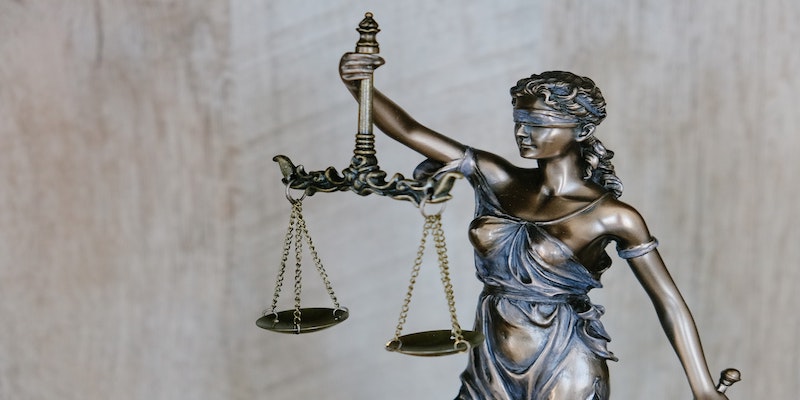Liquidation usually means the end of a business, its final journey before the shutters come down for good. But can a company liquidation be reversed?
As with most things in business, the answer is not always black and white, and actually depends on a myriad of different factors. To help shed some light on the situation, we will take a brief look at the liquidation process and investigate how the methods chosen to close down the firm can have a direct impact on whether the process can be reversed.
What Happens when a Company is Liquidated?
When a company enters the liquidation process, a licensed insolvency practitioner is appointed who will oversee the closure of the firm. Its assets will be sold or liquidated to pay off any debts it may have, before the business is closed down.
For more information about the company liquidation process, please check out our blog on the subject.
Can a Company Liquidation be Reversed?
Whether or not a company liquidation can be reversed depends entirely on the method that is being used to close down the business. There are three main ways to liquidate a firm, which are:
- Creditors Voluntary Liquidation (CVL): This takes place when a business is struggling to pay its debts and it agrees with its creditors that the best course of action is to close down
- Members Voluntary Liquidation (MVL): A method of closing down a firm that is not in debt
- Compulsory Liquidation: Occurs when the creditors of a business force it to close due to insolvency
With the basics now covered, we will look into the different forms of company liquidation and whether the process can be reversed.
Creditors Voluntary Liquidation
It is not possible to reverse a CVL once the process has begun. That being said, the directors of a closed company are able to purchase the assets of the newly-defunct business – whether they are stock, premises or even its name.

The process for doing this is controlled extremely closely, as there are strict regulations in place that are designed to protect the interests of a company’s creditors. You can find out more about this by reading our blog.
Members Voluntary Liquidation
While it is possible for a MVL to be reversed, this can only happen once the company has been closed down. There is no way to halt the process once it has begun.
A MVL can only be reversed within six years of the firm being wound up. To achieve this, an application must be made to the High Court asking them to annul the liquidation.
Success is not guaranteed, however. The High Court will only grant an application if the former company directors can provide evidence that there would be some benefit to the company by reversing the decision. It is simply not enough for the directors to change their mind.
Compulsory Liquidation/Winding Up Petition
It is often assumed that once a winding up petition has been granted by the Courts, there is no way of reversing it. The liquidator will take control of the firm, gather together any assets and liquidate them to pay off creditors. Once this has been done, the company will be closed.
While this is certainly true in the vast majority of cases, it is actually possible to stop the liquidation from taking place and return it to the hands of its directors. This is possible under Section 147 of the Insolvency Act 1986, which allows a Court to exercise its own discretion and issue what is known as a “permanent sist”. The legislation provides little guidance on when the Courts will grant a permanent sist, however there are a few points they will need to be satisfied on before they will even consider reversing the compulsory liquidation process.

Firstly, a judge would have to be convinced that the company’s creditors will not be left out of pocket if a permanent sist is granted. For this to happen, the firm’s directors will need to prove their ability to pay off all of their debts in full. Because the process has gotten to the winding up stage, it will be extremely unlikely that there will be much room for negotiation. The liquidator’s needs are also taken into account.
The final thing a Court will look at is whether it is in the public interest to grant a permanent sist. If there is any suggestion that the company directors poorly managed the firm or did not fulfil their responsibilities, a judge will be highly unlikely to reverse the liquidation process. For example, if the firm’s creditors have tried multiple times to close down the business due to non-payment of debt, a permanent sist will not be granted.
It is also possible to reverse a compulsory liquidation as soon as the winding up petition has been issued. For this to happen, an individual can apply to have the order rescinded on the grounds that the Courts did not have all the relevant facts when its decision was made. Such an application can only be made within seven days of the order being issued.
How Inquesta can Help
If your company is in financial distress, it is essential to seek specialist assistance at your earliest opportunity. If you are able to recognise the warning signs of trouble and take action right away, you could turn around your situation before liquidation even becomes necessary.
This is where Inquesta can help. We have amassed decades of experience in helping companies improve their financial situation and steer themselves away from distress. If the company is not salvageable, we are able to assist with all forms of liquidation.
Our clients are our number one priority. We are committed to achieving the best possible outcome for everyone we represent, so you can be confident you are working with someone who has your best interests at heart. We have even created a free downloadable eBook that covers all areas of the liquidation process, from recognising the warning signs, to responsibilities towards staff and shareholders.
For more information about how Inquesta can help, contact a member of our team today or request a free consultation.


